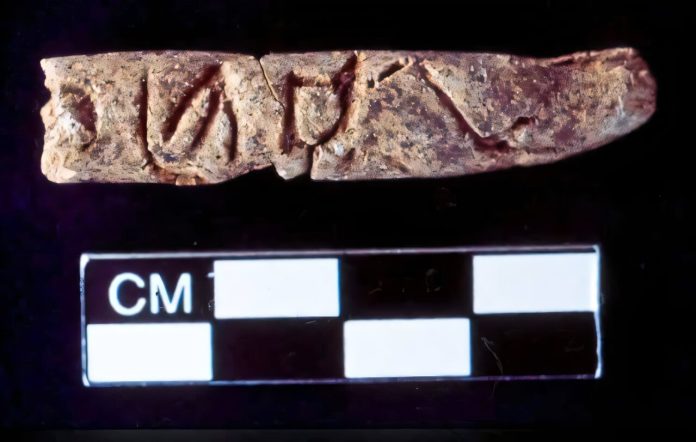
Archaeologists have uncovered what could be the oldest alphabet in human history, etched onto small clay cylinders discovered in an ancient tomb in Syria.
These finger-sized artifacts date back to around 2400 BCE, making them 500 years older than any previously known alphabetic writing.
The discovery challenges what we know about where and when alphabets were invented.
The groundbreaking find was made by a team of researchers from Johns Hopkins University, led by Professor Glenn Schwartz, during a dig at the ancient city of Tell Umm-el Marra in western Syria.
This site was one of the first medium-sized urban centers in the region during the Early Bronze Age.
“Alphabets made writing accessible to everyone, not just the wealthy and powerful,” Schwartz explained.
“This discovery shows that people were experimenting with new ways to communicate much earlier and in a different place than we thought.”
The clay cylinders were discovered in a well-preserved tomb alongside six skeletons, gold and silver jewelry, pottery, cookware, and a spearhead.
The cylinders, which are lightly baked and have holes suggesting they were once attached to other objects, are covered with symbols believed to be part of an early alphabet.
“The holes make us think these were used as labels,” Schwartz said. “They might have described the contents of a pot, where it came from, or who owned it. Without being able to translate the symbols, we can only guess.”
The team used carbon-14 dating to confirm the age of the tomb and its artifacts, firmly placing the writing at around 2400 BCE. This finding suggests that alphabets may not have originated in Egypt, as previously believed, but possibly in this part of Syria.
Until now, scholars believed the alphabet was first invented around 1900 BCE in Egypt. The clay cylinders from Syria are much older, indicating that the alphabet’s true origin story could be entirely different.
“These artifacts suggest that early urban societies were experimenting with revolutionary ways to communicate,” Schwartz said. “This changes how we think about the spread of writing and the development of early civilizations.”
Schwartz will present the details of this discovery on November 21 at the American Society of Overseas Research’s Annual Meeting. For now, the mysterious symbols remain untranslated, but their significance is clear: they mark a major milestone in human history and could reshape our understanding of early communication and culture.
Source: Johns Hopkins University.



